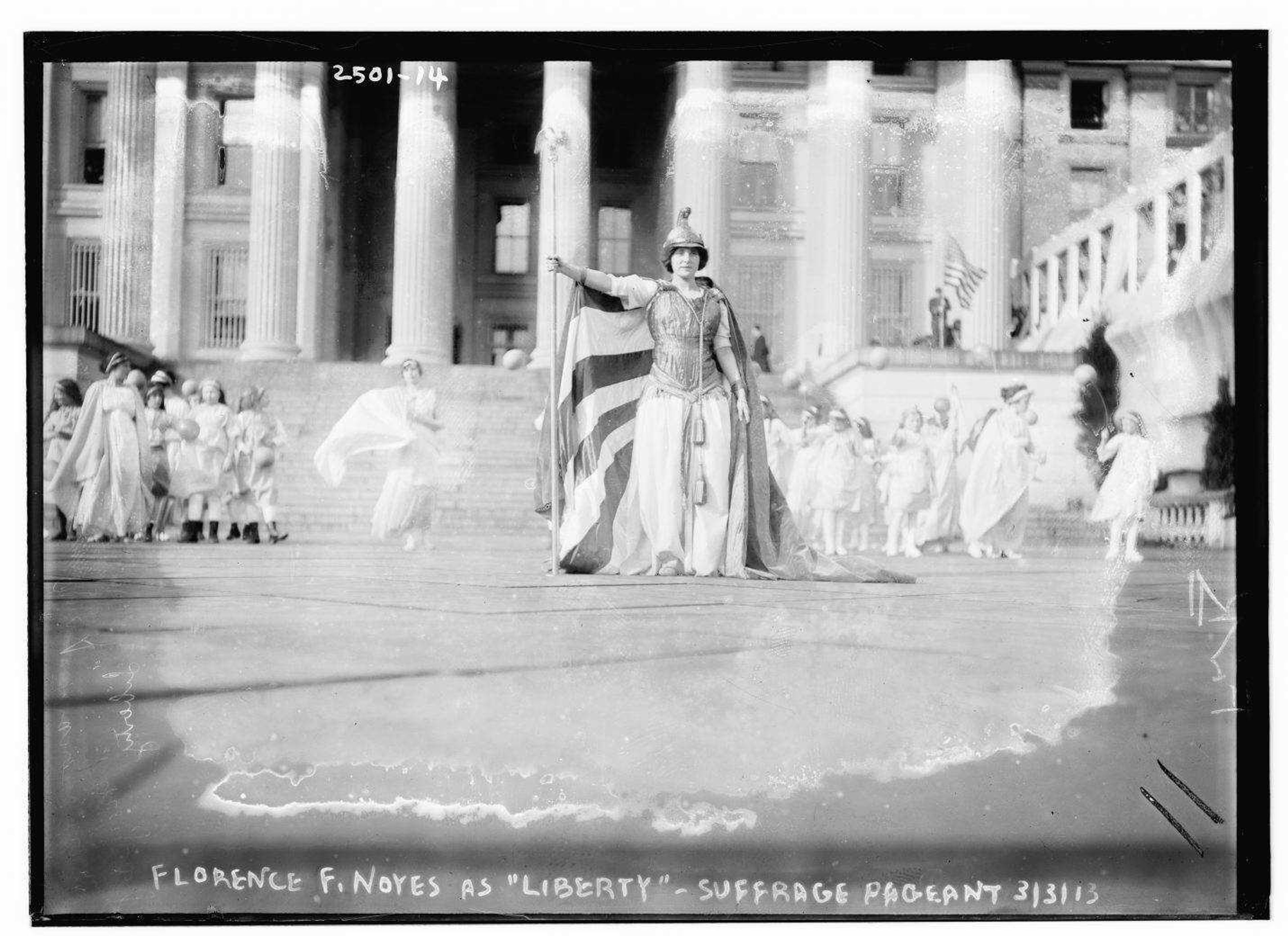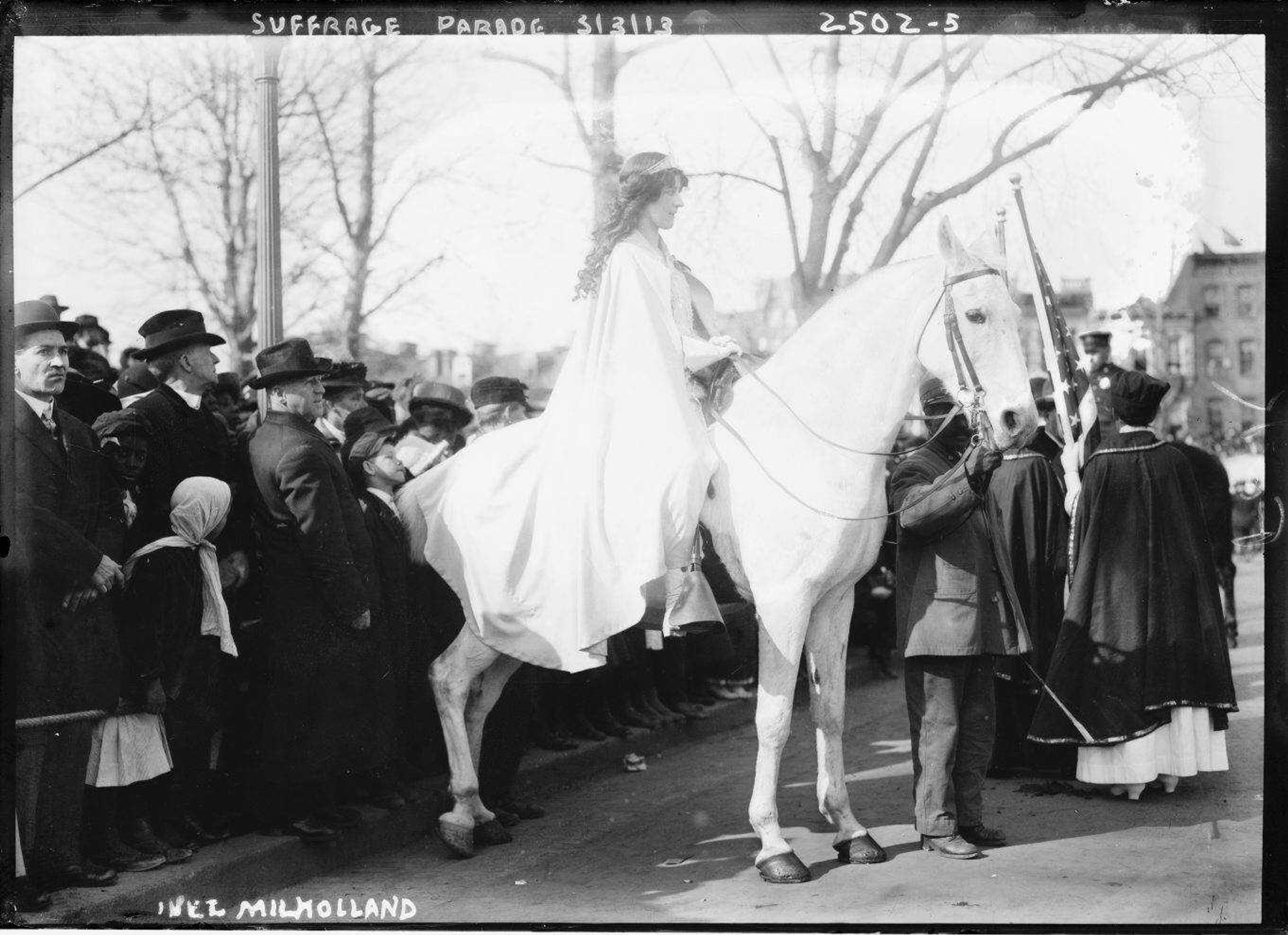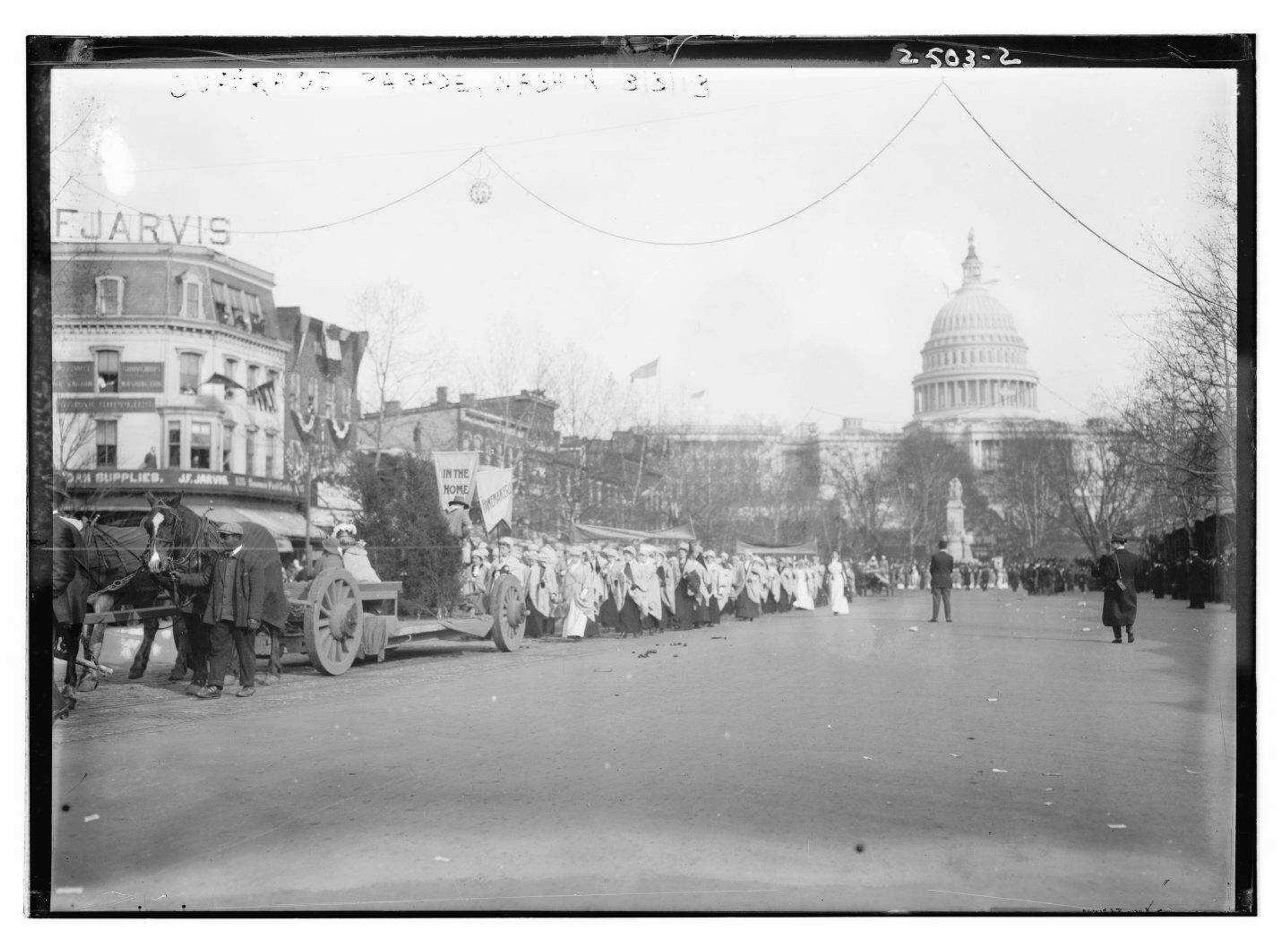Women's march in DC an echo of the past
WASHINGTON -- Thousands of women take to the streets of Washington, demanding a greater voice for women in American political life as a new president takes power. This will happen Saturday, one day after the inauguration of Donald Trump. This did happen more than 100 years ago, one day before the inauguration of Woodrow Wilson...
WASHINGTON -- Thousands of women take to the streets of Washington, demanding a greater voice for women in American political life as a new president takes power.
This will happen Saturday, one day after the inauguration of Donald Trump.
This did happen more than 100 years ago, one day before the inauguration of Woodrow Wilson.
So notable was the women's suffrage parade down Pennsylvania Avenue on March 3, 1913, that Wilson slipped into town almost unnoticed on the eve of his swearing-in ceremony, forced to travel back alleys to reach his hotel.
"Scarcely a score of persons noticed his automobile as it whizzed through the silent streets, and only a few applauded him as he reached his hotel," The New York Times reported at the time.

Meanwhile, more than 5,000 women marched from the Capitol to the steps of the Treasury Department in a parade that featured nine bands, four mounted brigades and two dozen floats.
The procession proved so pivotal in the struggle to give women the right to vote, it will be depicted on the back of the new $10 bill scheduled to be issued in 2020 -- 100 years after women won the vote with ratification of the 19th Amendment to the Constitution.
This year, more than a century later, throngs of woman Saturday will march a route similar to the suffragists' in an echo of the past.
Women still are seeking a stronger voice in society as a new president is inaugurated who repeatedly demeaned women during his election campaign.
The marchers' mission statement pledges: "We will not rest until women have parity and equity at all levels of leadership in society."

The 1913 women's march, timed to get maximum publicity by coinciding with the inauguration, was not without controversy.
According to the Library of Congress' American Memory archives, crowds in town for the inauguration -- mostly men -- surged into the streets and made it difficult for the marchers to pass, forcing them to go single file at times.
Women were jeered, tripped, shoved and spat upon, and police did little to assist them or quell the unrest.
About 100 marchers were taken to the hospital with injuries.
The participants included Helen Keller, the deaf and blind political activist and author.
She was so unnerved by the disruptions, she was unable to speak later that day at Continental Hall.
Secretary of War Henry Stimson authorized a troop of cavalry to help control the crowd, according to the archives.
The treatment of the women by the crowd and police led to congressional hearings and the ouster of the District of Columbia's police chief.
"If I had had a policeman's billy, I would have got that crowd back," one suffragist testified at the hearings, The Times reported.
The controversy ultimately worked to the women's advantage, producing broad and sympathetic press coverage for their cause.
Connect with the Southeast Missourian Newsroom:
For corrections to this story or other insights for the editor, click here. To submit a letter to the editor, click here. To learn about the Southeast Missourian’s AI Policy, click here.









